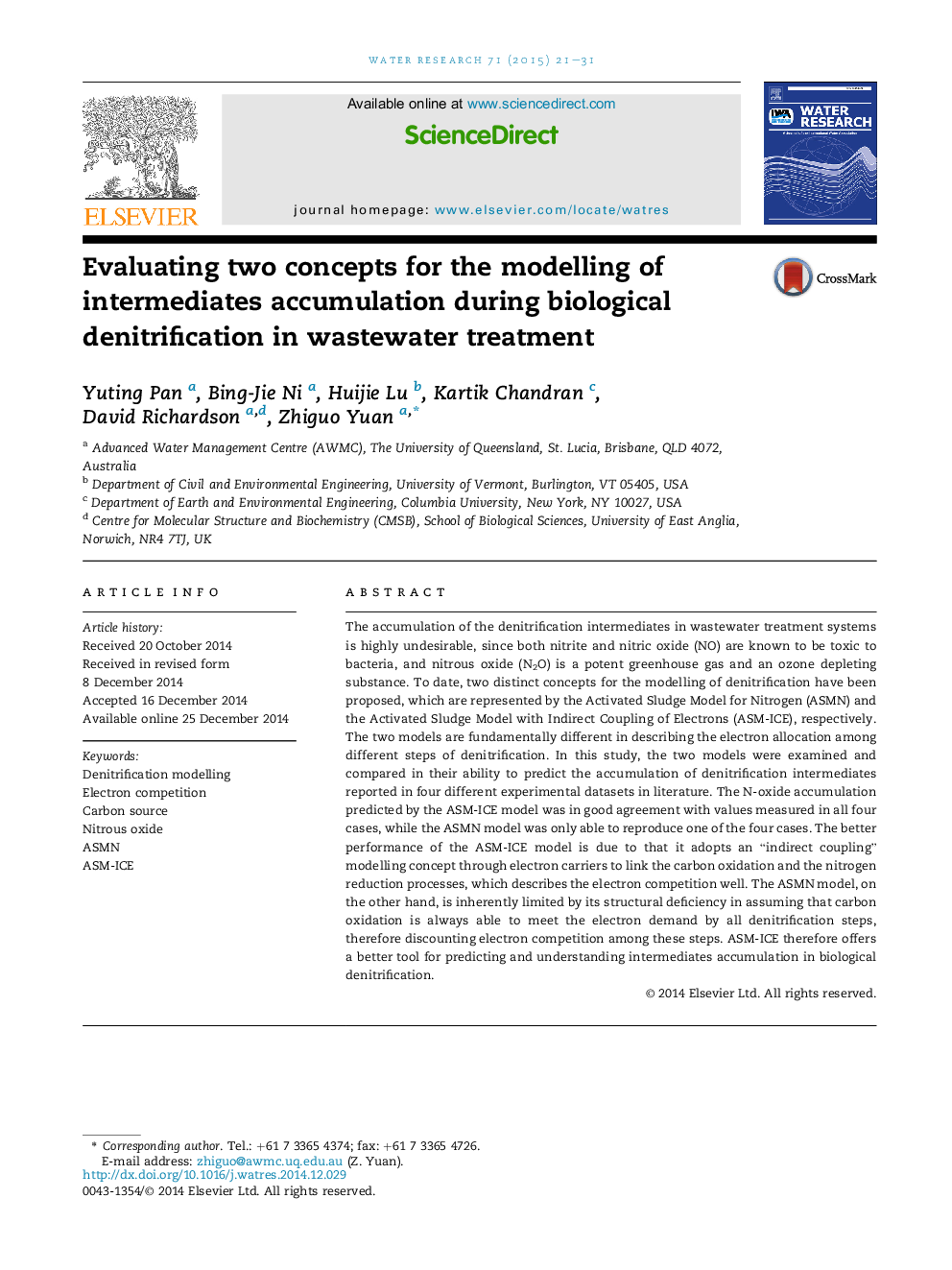| کد مقاله | کد نشریه | سال انتشار | مقاله انگلیسی | نسخه تمام متن |
|---|---|---|---|---|
| 4481165 | 1623097 | 2015 | 11 صفحه PDF | دانلود رایگان |
• Two distinct concepts for denitrification modelling were evaluated.
• Four cases were used to examine the two distinct denitrification model concepts.
• ASM-ICE is favoured over ASMN in modelling denitrification intermediates.
The accumulation of the denitrification intermediates in wastewater treatment systems is highly undesirable, since both nitrite and nitric oxide (NO) are known to be toxic to bacteria, and nitrous oxide (N2O) is a potent greenhouse gas and an ozone depleting substance. To date, two distinct concepts for the modelling of denitrification have been proposed, which are represented by the Activated Sludge Model for Nitrogen (ASMN) and the Activated Sludge Model with Indirect Coupling of Electrons (ASM-ICE), respectively. The two models are fundamentally different in describing the electron allocation among different steps of denitrification. In this study, the two models were examined and compared in their ability to predict the accumulation of denitrification intermediates reported in four different experimental datasets in literature. The N-oxide accumulation predicted by the ASM-ICE model was in good agreement with values measured in all four cases, while the ASMN model was only able to reproduce one of the four cases. The better performance of the ASM-ICE model is due to that it adopts an “indirect coupling” modelling concept through electron carriers to link the carbon oxidation and the nitrogen reduction processes, which describes the electron competition well. The ASMN model, on the other hand, is inherently limited by its structural deficiency in assuming that carbon oxidation is always able to meet the electron demand by all denitrification steps, therefore discounting electron competition among these steps. ASM-ICE therefore offers a better tool for predicting and understanding intermediates accumulation in biological denitrification.
Figure optionsDownload high-quality image (157 K)Download as PowerPoint slide
Journal: Water Research - Volume 71, 15 March 2015, Pages 21–31
